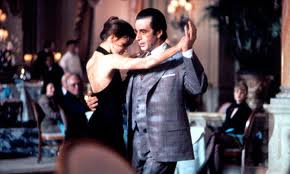Turkey Day: Make It a Hoot!
Have you ever listened to a turkey? I’ve never heard one say “gobble.” Other guttural sounds, perhaps, but not “gobble.” What turkeys say and what we think they say are different.
It’s the same with Thanksgiving. The way we celebrate now and the way that very first Thanksgiving — held in 1621 by the Pilgrims and the Wampanoag Native American tribe to celebrate the colony’s first successful harvest — was celebrated are very different.
First, the one surviving written account of that meal does not mention turkey. Nor mashed potatoes, gravy or cranberry sauce. More likely, the people celebrated with roast duck, venison — courtesy of the Wampanoag, who were key in helping the Pilgrims survive — as well as seafood, squash, corn and cabbage.
Also, many of the illustrations we’ve seen of that first Thanksgiving show the Pilgrims wearing clothing better suited to spring than late autumn: tall hats and tailored suits for the men and cotton dresses and caps for the women. Nearby stood a few Native Americans wrapped in furs. They were the smart ones.
C’mon, folks. It was the end of November outside of Boston. The weather must’ve been freezing. If the Pilgrims actually dressed that way, it’s no wonder they didn’t survive the next few months. Most of them must have died from pneumonia.
However, one real thing does live on from that first Thanksgiving: giving thanks. I believe the Pilgrims did do that. (Whether it was before or after they went to war with the Native Americans, I’m not sure.)
For those of us ages 50, 60 and over, we remember a Thanksgiving where we watched the Macy’s Parade and ate a big dinner with people that we may or may not have liked. We said a thank-you statement, prayer, or comment at dinner. Then it was over.
Now, Thanksgiving is a big commercial deal. Families still get together, but they may have to travel halfway around the globe, all the while fighting their way through crowded airports and praying for no weather delays. And we’ve institutionalized Black Friday and Cyber Monday as de-facto holidays.
It seems that what we’re thankful for is if we don’t have to talk to that relative whom we can’t stand, or if we can beat the crowd at the mall so we can get that big discount. When did we get so cynical? Today, pressure and stress seem to be more intense than in previous years. As a result, everyone is pulled in 50 different directions.
It’s impossible to get the Norman Rockwell holiday we hope for. I’m not sure if it ever really was possible. Even as a little girl in the 1950s, while I remember scrumptious pumpkin pie and that satisfying feeling of having a belly full of turkey and dressing, I also remember family gossip, heated arguments, and hidden resentments bubbling up to the surface.
But there is hope! It’s called using your sense of humor Make yourself laugh. If you are alone and haunted by losses and can’t think of anything you are particularly thankful for, you need to laugh. If you are with family, and dreading every second, you need a hearty guffaw. If you are with friends, and the holiday is not what you anticipated, you need a good chuckle.
This is my Thanksgiving gift to all of you – a good laugh. Share this humor with your friends:
I saw this sign outside the coffee shop at the Whole Foods Market in San Francisco: “Everyone loves a good grind.”
If that’s not enough, check out Grumpy Cat.
Still need another giggle? look at these test answers from high school students:
Happy Thanksgiving to all my beautiful, vivacious, buoyant women! Whether you are alone or with family and friends, make it a hoot!


